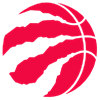It's still early. As fun as small-sample early-season numbers are, we're still not even at the point where the earliest stats to stability such as strikeout rate and walk rate are all that telling. Just look at the performances of Sandy Alcantara and Andrew Heaney on Monday if you need a reminder. Alcantara carried a 1.84 ERA into his start against the Phillies but left the game with a 5.79 ERA after allowing nine runs in four innings. Heaney gave up seven runs in 2.2 innings in his first start as a Ranger but rebounded to tie an American League record with nine consecutive strikeouts while throwing five shutout innings against the Royals.
As those outings suggest, it's far too early to say conclusively if a player is simply on a brief hot or cold streak, or if they're at the start of a hot or cold year. If you want actionable fantasy advice, you're still best served poring over lineups rather than leaderboards, as player usage at this point is still more predictive than player performance in many cases.
That said, that doesn't mean we should ignore early stats entirely. I wouldn't give much thought to stats that involve lots of factors outside a player's control (such as batting average, runs, RBI or ERA), but metrics like strikeout rate, walk rate and barrel rate are somewhat useful already. Definitely don't overreact to players who are merely a few points from their norms in those metrics — a single strikeout
It's still early. As fun as small-sample early-season numbers are, we're still not even at the point where the earliest stats to stability such as strikeout rate and walk rate are all that telling. Just look at the performances of Sandy Alcantara and Andrew Heaney on Monday if you need a reminder. Alcantara carried a 1.84 ERA into his start against the Phillies but left the game with a 5.79 ERA after allowing nine runs in four innings. Heaney gave up seven runs in 2.2 innings in his first start as a Ranger but rebounded to tie an American League record with nine consecutive strikeouts while throwing five shutout innings against the Royals.
As those outings suggest, it's far too early to say conclusively if a player is simply on a brief hot or cold streak, or if they're at the start of a hot or cold year. If you want actionable fantasy advice, you're still best served poring over lineups rather than leaderboards, as player usage at this point is still more predictive than player performance in many cases.
That said, that doesn't mean we should ignore early stats entirely. I wouldn't give much thought to stats that involve lots of factors outside a player's control (such as batting average, runs, RBI or ERA), but metrics like strikeout rate, walk rate and barrel rate are somewhat useful already. Definitely don't overreact to players who are merely a few points from their norms in those metrics — a single strikeout or walk will change a player's strikeout or walk rate by two full points if he only has 50 plate appearances thus far, and most of the league hasn't even reached that point — but the extreme outliers are worth taking note of. Several such extremes make up this week's risers and fallers.
RISERS
 Wander Franco, SS, Rays: Vladimir Guerrero Jr. was almost universally considered a generational prospect but hit a merely good .269/.336/.442 over his first two seasons after debuting at the very young age of 20, so many (me included) ranked him far too low heading into his third season, when he broke out to hit .311/.401/.601 with 48 homers. Could the same thing be happening with Franco? He's also a generational prospect, but he also hit a merely good .282/.337/.439 over his first two seasons after debuting as a 20-year-old. All caveats about the Rays' strength of schedule aside, the young shortstop couldn't have gotten off to a much better start this season. Through 10 games, he's hitting .317/.364/.683 with four homers and a pair of steals. Most encouragingly, his contact is much louder than ever before. After posting a barrel rate below five percent (due primarily to his single-digit launch angle) in both of his first two campaigns, he owns a 20.0 percent barrel rate, with his launch angle jumping up to 17.7 degrees. This could be the start of something big.
Wander Franco, SS, Rays: Vladimir Guerrero Jr. was almost universally considered a generational prospect but hit a merely good .269/.336/.442 over his first two seasons after debuting at the very young age of 20, so many (me included) ranked him far too low heading into his third season, when he broke out to hit .311/.401/.601 with 48 homers. Could the same thing be happening with Franco? He's also a generational prospect, but he also hit a merely good .282/.337/.439 over his first two seasons after debuting as a 20-year-old. All caveats about the Rays' strength of schedule aside, the young shortstop couldn't have gotten off to a much better start this season. Through 10 games, he's hitting .317/.364/.683 with four homers and a pair of steals. Most encouragingly, his contact is much louder than ever before. After posting a barrel rate below five percent (due primarily to his single-digit launch angle) in both of his first two campaigns, he owns a 20.0 percent barrel rate, with his launch angle jumping up to 17.7 degrees. This could be the start of something big.
 Bryan Reynolds, OF, Pirates: The Pirates, understandably, want to sign Reynolds to a long-term extension. Reynolds, understandably, seems to want to get out of town as quickly as he can. Through his first 10 games, he's put up a performance that will either increase the value of his potential deal with the Pirates or motivate other teams to pay up and rescue him from the perennial stragglers. He's homered five times and stolen two bases while slashing .366/.378/.829, and while he won't maintain that kind of performance all year long, his Statcast metrics say everything is deserved so far. Per his .955 xSLG, he may even be getting unlucky. He's striking out just 11.1 percent of the time, while his barrel rate sits at an absurd 31.6 percent. He's playing like a man on a mission, and if that gets him a trade to a club with a better park and a better surrounding lineup (i.e., nearly every other team in the league), his value could rise even further in the second half.
Bryan Reynolds, OF, Pirates: The Pirates, understandably, want to sign Reynolds to a long-term extension. Reynolds, understandably, seems to want to get out of town as quickly as he can. Through his first 10 games, he's put up a performance that will either increase the value of his potential deal with the Pirates or motivate other teams to pay up and rescue him from the perennial stragglers. He's homered five times and stolen two bases while slashing .366/.378/.829, and while he won't maintain that kind of performance all year long, his Statcast metrics say everything is deserved so far. Per his .955 xSLG, he may even be getting unlucky. He's striking out just 11.1 percent of the time, while his barrel rate sits at an absurd 31.6 percent. He's playing like a man on a mission, and if that gets him a trade to a club with a better park and a better surrounding lineup (i.e., nearly every other team in the league), his value could rise even further in the second half.
 Brandon Lowe, 2B, Rays: Lowe was one of my biggest targets during draft season. His draft stock was down on the back of a season in which he produced a career-low 104 wRC+ while being limited to 65 games due to a nagging back injury. With a healthy season, it looked as though he could be a real bargain, as he carried a career 13.6 percent barrel rate into this season and had cut his strikeout rate to 22.9 percent last year even in a down year. So far, things couldn't be going much better. He's sat against three of four lefties thus far, which does cap his ceiling, but he's hit an outstanding .292/.469/.667 with three homers in eight games. That line comes with a 29.4 percent barrel rate and more walks (eight) than strikeouts (seven). He'll have to prove his health over a longer period to truly finish the year as a bargain, and the Rays will start playing tougher teams soon, but it's nonetheless been an excellent start for the second baseman.
Brandon Lowe, 2B, Rays: Lowe was one of my biggest targets during draft season. His draft stock was down on the back of a season in which he produced a career-low 104 wRC+ while being limited to 65 games due to a nagging back injury. With a healthy season, it looked as though he could be a real bargain, as he carried a career 13.6 percent barrel rate into this season and had cut his strikeout rate to 22.9 percent last year even in a down year. So far, things couldn't be going much better. He's sat against three of four lefties thus far, which does cap his ceiling, but he's hit an outstanding .292/.469/.667 with three homers in eight games. That line comes with a 29.4 percent barrel rate and more walks (eight) than strikeouts (seven). He'll have to prove his health over a longer period to truly finish the year as a bargain, and the Rays will start playing tougher teams soon, but it's nonetheless been an excellent start for the second baseman.
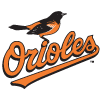 Grayson Rodriguez, SP, Orioles: Rodriguez missed out on an Opening Day roster spot in what appeared to be a pretty blatant example of service-time manipulation. He hadn't had a great spring, but his underlying numbers weren't that bad, and it was hard to make the case that he wasn't one of Baltimore's five most talented starters. The situation wound up resolving itself almost immediately, as he debuted last Wednesday after Kyle Bradish (foot) landed on the injured list. His first MLB inning didn't go well, as he allowed a pair of runs on two hits and a walk, but he shut down the Rangers over four more innings the rest of the way. The fact that he didn't earn an Opening Day spot means his hold on a job may still be tenuous, so he's at risk of being sent down when Bradish returns if he has a couple bad outings, but if he pitches as well as the scouting reports say he should be able to, he'll be up for the rest of the year.
Grayson Rodriguez, SP, Orioles: Rodriguez missed out on an Opening Day roster spot in what appeared to be a pretty blatant example of service-time manipulation. He hadn't had a great spring, but his underlying numbers weren't that bad, and it was hard to make the case that he wasn't one of Baltimore's five most talented starters. The situation wound up resolving itself almost immediately, as he debuted last Wednesday after Kyle Bradish (foot) landed on the injured list. His first MLB inning didn't go well, as he allowed a pair of runs on two hits and a walk, but he shut down the Rangers over four more innings the rest of the way. The fact that he didn't earn an Opening Day spot means his hold on a job may still be tenuous, so he's at risk of being sent down when Bradish returns if he has a couple bad outings, but if he pitches as well as the scouting reports say he should be able to, he'll be up for the rest of the year.
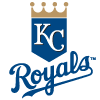 Kris Bubic, SP, Royals: On the one hand, Bubic entered the year with a 4.89 ERA in 309 major-league innings, with his 4.74 SIERA suggesting his struggles were deserved. On the other hand, he owns a 1.64 ERA through two starts, striking out 30.2 percent of opposing batters while walking 2.3 percent. It may still be quite early, but there's reason to believe Bubic isn't the same pitcher he was previously. The Royals' pitching staff were all broadly more interesting than normal this winter after the team brought in new pitching coach Brian Sweeney, who'd previously been part of Cleveland's excellent pitching operation. Bubic already looks like a new man, having altered his release point, increased his velocity and added a slider. With so many changes to his game, there's a case to be made for ignoring Bubic's previous years entirely and treating him as a new pitcher. I'll still want to see more than two starts before the worries about regression to his past numbers go away entirely, but it's been a head-turning beginning of the season for the lefty.
Kris Bubic, SP, Royals: On the one hand, Bubic entered the year with a 4.89 ERA in 309 major-league innings, with his 4.74 SIERA suggesting his struggles were deserved. On the other hand, he owns a 1.64 ERA through two starts, striking out 30.2 percent of opposing batters while walking 2.3 percent. It may still be quite early, but there's reason to believe Bubic isn't the same pitcher he was previously. The Royals' pitching staff were all broadly more interesting than normal this winter after the team brought in new pitching coach Brian Sweeney, who'd previously been part of Cleveland's excellent pitching operation. Bubic already looks like a new man, having altered his release point, increased his velocity and added a slider. With so many changes to his game, there's a case to be made for ignoring Bubic's previous years entirely and treating him as a new pitcher. I'll still want to see more than two starts before the worries about regression to his past numbers go away entirely, but it's been a head-turning beginning of the season for the lefty.
 Brian Anderson, 3B/OF, Brewers: Brian Anderson, best hitter in baseball? We're unlikely to be saying that by season's end, but Anderson has made his case in the early going, hitting .333/.447/.667 with three homers and 10 RBI in his first 10 games. Anderson was a pretty good hitter for a few years in Miami, slashing .266/.350/.436 (good for a 115 wRC+) from 2018 through 2020. Injuries limited him to 165 games in 2021 and 2022 and seemingly affected his performance, as he stumbled to a .233/.322/.359 line (93 wRC+). Now that he's healthy again and in a much better park, it shouldn't be too big of a surprise if he has his best year yet, as he's still just 29 years old and shouldn't be close to over the hill yet. Warnings about the season being just 10 games old do still apply here, however, but while we shouldn't get ahead of ourselves about his performance, he also deserves a spot here due to his everyday playing time. Exactly how often he'd play was in doubt over the winter, but Luis Urias' two-month absence with a hamstring strain should keep Anderson in an everyday role.
Brian Anderson, 3B/OF, Brewers: Brian Anderson, best hitter in baseball? We're unlikely to be saying that by season's end, but Anderson has made his case in the early going, hitting .333/.447/.667 with three homers and 10 RBI in his first 10 games. Anderson was a pretty good hitter for a few years in Miami, slashing .266/.350/.436 (good for a 115 wRC+) from 2018 through 2020. Injuries limited him to 165 games in 2021 and 2022 and seemingly affected his performance, as he stumbled to a .233/.322/.359 line (93 wRC+). Now that he's healthy again and in a much better park, it shouldn't be too big of a surprise if he has his best year yet, as he's still just 29 years old and shouldn't be close to over the hill yet. Warnings about the season being just 10 games old do still apply here, however, but while we shouldn't get ahead of ourselves about his performance, he also deserves a spot here due to his everyday playing time. Exactly how often he'd play was in doubt over the winter, but Luis Urias' two-month absence with a hamstring strain should keep Anderson in an everyday role.
FALLERS
 Nick Castellanos, OF, Phillies: Castellanos signed a five-year, nine-figure deal with the Phillies prior to last season and proceeded to fall on his face in his first season with the team. Even while spending half his time in Citizens Bank Park, he homered just 13 times while slashing .263/.305/.389. Knowing he needed a change, he worked with hitting coach Kevin Long over the offseason to simplify his swing. Through his first nine games of this year, he managed a passable .226/.351/.419 slash line, but his 43.2 percent strikeout rate was the worst among qualified hitters and he'd yet to record a single barrel. Of course, in the time between deciding to include him in this piece and the piece getting published, he went on to go 3-for-5 with a double, three RBI and three runs scored in the Phillies blowout victory over the Marlins on Monday, a reminder that it's still early. He also struck out one more time, taking a pitch that was clearly outside the strike zone for a called third strike and promptly getting ejected for arguing about it even with his team up 14-3, so it's too early to say things are all going according to plan.
Nick Castellanos, OF, Phillies: Castellanos signed a five-year, nine-figure deal with the Phillies prior to last season and proceeded to fall on his face in his first season with the team. Even while spending half his time in Citizens Bank Park, he homered just 13 times while slashing .263/.305/.389. Knowing he needed a change, he worked with hitting coach Kevin Long over the offseason to simplify his swing. Through his first nine games of this year, he managed a passable .226/.351/.419 slash line, but his 43.2 percent strikeout rate was the worst among qualified hitters and he'd yet to record a single barrel. Of course, in the time between deciding to include him in this piece and the piece getting published, he went on to go 3-for-5 with a double, three RBI and three runs scored in the Phillies blowout victory over the Marlins on Monday, a reminder that it's still early. He also struck out one more time, taking a pitch that was clearly outside the strike zone for a called third strike and promptly getting ejected for arguing about it even with his team up 14-3, so it's too early to say things are all going according to plan.
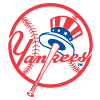 Anthony Volpe, SS, Yankees: While we certainly don't want to be judging a highly touted rookie too harshly on his first 10 games, it's safe to say the start to Volpe's big-league career hasn't gone as planned. He's avoided being a total zero for fantasy purposes thanks to his three steals, but he's hitting a miserable .129/.250/.194, good for a 32 wRC+. His underlying numbers tell a similar story about his struggles at the plate. He's struck out in a third of his plate appearances and has managed a 26.3 percent hard-hit rate. The high launch angle (24.2 degrees) that enabled his breakout in the minors is still present, but a high launch angle combined with weak contact is a recipe for popouts and harmless flyouts, rather than homers. These 10 games almost definitely have minimal if any impact on Volpe's long-term stock, but given that he also struggled at the Triple-A level late last season, it wouldn't be a shock if the Yankees decided he needed more seasoning in the minors.
Anthony Volpe, SS, Yankees: While we certainly don't want to be judging a highly touted rookie too harshly on his first 10 games, it's safe to say the start to Volpe's big-league career hasn't gone as planned. He's avoided being a total zero for fantasy purposes thanks to his three steals, but he's hitting a miserable .129/.250/.194, good for a 32 wRC+. His underlying numbers tell a similar story about his struggles at the plate. He's struck out in a third of his plate appearances and has managed a 26.3 percent hard-hit rate. The high launch angle (24.2 degrees) that enabled his breakout in the minors is still present, but a high launch angle combined with weak contact is a recipe for popouts and harmless flyouts, rather than homers. These 10 games almost definitely have minimal if any impact on Volpe's long-term stock, but given that he also struggled at the Triple-A level late last season, it wouldn't be a shock if the Yankees decided he needed more seasoning in the minors.
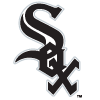 Eloy Jimenez, OF, White Sox: As has been the refrain for the past few seasons, this could be Jimenez's breakout season if it's the year he finally stays healthy. Unfortunately, this already isn't the year he stays healthy. He made it just five games into the season before going down with a left hamstring strain. In isolation, this particular injury doesn't seem too worrisome, as he's already resumed light running and hitting, and may not miss too much time. But for a player whose value depends so much on finally getting a good run of health, a snag this early in April is a major worry. There's sometimes a thought that injuries like this are "priced in" for a player like Jimenez, but that's not a line of argument that works once the injury has already happened. If you expected Jimenez to miss, say, a quarter of the season due to injury when the schedule began, you don't get to count the 10 games he's already missed toward that total. Instead, it makes more sense to still assume Jimenez will miss a quarter of whatever time remains once he's activated, and there's a good argument to be made for upping that number now that we know he's already dealing with muscle problems.
Eloy Jimenez, OF, White Sox: As has been the refrain for the past few seasons, this could be Jimenez's breakout season if it's the year he finally stays healthy. Unfortunately, this already isn't the year he stays healthy. He made it just five games into the season before going down with a left hamstring strain. In isolation, this particular injury doesn't seem too worrisome, as he's already resumed light running and hitting, and may not miss too much time. But for a player whose value depends so much on finally getting a good run of health, a snag this early in April is a major worry. There's sometimes a thought that injuries like this are "priced in" for a player like Jimenez, but that's not a line of argument that works once the injury has already happened. If you expected Jimenez to miss, say, a quarter of the season due to injury when the schedule began, you don't get to count the 10 games he's already missed toward that total. Instead, it makes more sense to still assume Jimenez will miss a quarter of whatever time remains once he's activated, and there's a good argument to be made for upping that number now that we know he's already dealing with muscle problems.
 Edward Cabrera, SP, Marlins: Cabrera beat out Braxton Garrett for the Marlins' fifth starter job, but he's not doing a very good job holding onto it. He's only allowed four runs on two hits through his first two starts, but he's walked 13 batters in 6.2 innings — a 37.1 percent walk rate. That would be a red flag for any pitcher, but it's even more concerning for someone who has a history of control problems. In his seven-start debut in 2021, Cabrera walked 15.8 percent of opposing batters, and he only managed to cut that figure to 11.3 percent across 14 starts last season. He also walked 10.3 percent of opposing batters in 22 minor-league starts over the last two seasons. Cabrera has good stuff, and, at age 24, still has time to harness his control, but the reliever risk here appears very real. Garrett re-entered the rotation temporarily in place of the injured Johnny Cueto (biceps), and there's a chance he takes Cabrera's spot permanently if the young righty can't find the zone soon.
Edward Cabrera, SP, Marlins: Cabrera beat out Braxton Garrett for the Marlins' fifth starter job, but he's not doing a very good job holding onto it. He's only allowed four runs on two hits through his first two starts, but he's walked 13 batters in 6.2 innings — a 37.1 percent walk rate. That would be a red flag for any pitcher, but it's even more concerning for someone who has a history of control problems. In his seven-start debut in 2021, Cabrera walked 15.8 percent of opposing batters, and he only managed to cut that figure to 11.3 percent across 14 starts last season. He also walked 10.3 percent of opposing batters in 22 minor-league starts over the last two seasons. Cabrera has good stuff, and, at age 24, still has time to harness his control, but the reliever risk here appears very real. Garrett re-entered the rotation temporarily in place of the injured Johnny Cueto (biceps), and there's a chance he takes Cabrera's spot permanently if the young righty can't find the zone soon.
















